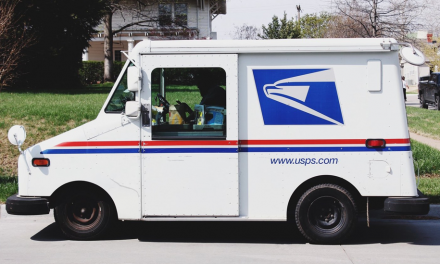
Foreign posts offer USPS lessons on modernising mail delivery
The US Postal Service has lessons to learn from its foreign counterparts to cope with “plummeting” mail volumes and record financial losses, according to a report from the Government Accountability Office (GAO) in the United States. The report was sent last week to Congressman Stephen F Lynch, the ranking member on the Federal Workforce and Post Office subcommittee of the House Oversight and Government Reform Committee.
It highlighted efforts by postal operators in Australia, Canada, Finland, Germany, Sweden, and Switzerland to modernize in the face of similar kind of declining mail volumes and high infrastructure, labor and operating costs that the USPS is currently experiencing.
In particular, the study highlights the way the foreign posts have engaged with some form of digital communications service – either purely electronic or hybrid systems that blend digital with hard copy delivery options.
The GAO report stated that the foreign posts it has studied have begun downsizing their delivery networks while providing multi-channel approaches for customers to send and receive mail.
Foreign posts have been making use of the public trust in their brands to offer electronic communications systems offering the security of physical mail with the speed and convenience of email.
Examples within the report included Australia Post’s eLetter hybrid mail service, Deutsche Post’s hybrid/digital mail service E-Postbrief, Sweden Post’s e-Letter hybrid mail delivery service and Itella’s Netposti service.
The report also highlighted Canada Post’s online bill presentment service, epost, for which a phase two is set to be introduced within the next two years to expand the service so that secure online delivery boxes mirror physical mailing addresses.
Swiss Post’s certified email service, SuisseID, and its print mail-to-digital service Swiss Post Box are also help up as possible ideas for the USPS to engage with digital delivery services.
One clever example of improving delivery efficiencies in rural areas within the GAO report was Itella’s Antilla Living Lab trial, in which the Finnish operator has cut home delivery to two days per week, but on other days items are delivered to central mail boxes in the Antilla village and residents are sent a text message when they have mail to collect. Uncollected mail is then delivered on the days when there are home deliveries provided.
Alternative retail points
Other lessons on reducing costs include a broader use of partnerships with retail facilities in order to spread post office services in areas where it may not be cost effective to have an entire post office building.
Such facilities would also help with expanding the times that customers can send or pick up mail. DHL’s PackStation, a 24-hour automated parcel drop-off point, was suggested as another good way to extend retail hours.
The reported stated that retail modernization had either improved customer service or reduced operating and labor costs for all of the foreign posts assessed.
The recommendations in the GAO report came with the big proviso that the USPS currently manages more retail outlets than all of the reviewed foreign posts combined, some 32,000 outlets, and delivering to 151 million US homes has twice as many delivery points as any foreign post studied.
The USPS, which posted an $8.5bn loss last year, operates on a unique scale in the world.
Nevertheless, some of the same challenges have been experienced by other posts, including political barriers, with the report recommending a nationwide public relations campaign to raise awareness among the public and lawmakers on the changes needed at the Postal Service.
Commenting on an earlier draft of the report, the USPS said earlier this month that it had already been pursuing a number of the recommendations, particularly in the use of alternative retail locations.
Alternative retail locations will become increasingly important as more than 2,000 current locations are closed to save around $500m a year, according to the USPS chief financial officer Joseph Corbett.
However, he suggested that many of the innovations highlighted by the report had been possible because of actions by governments and regulators.
“Aspects of the Postal Service’s modernisation could be more quickly and effectively instituted if legal and political barriers are removed,” he said of the US situation.
Corbett also warned that many of the achievements by foreign posts “did not produce results overnight”, and had been unpopular with stakeholders at first.
The USPS CFO did not comment directly on digital or hybrid mail options, but warned against the use of the term “modernisation” among recommendations, fearing that it would have some stakeholders interpreting the term as meaning more automation.
- Find out more about the opportunities that new technology heralds for the postal industry at the PosTech conference in Dubai next month. More details »













“USPS currently manages more retail outlets than all of the reviewed foreign posts combined, some 32,000 outlets, and delivering to 151 million US homes has twice as many delivery points as any foreign post studied.” — Of course the USPS has more outlets and delivers to more homes…the US has a population around 307 million vs 157 million for all of the countries combined in the study. The closest is Germany at 82 million followed by Canada at 31.5 million.
While it makes sense to scale back, trying to draw a conclusion from the fact that the USPS has more outlets for a population base that is around 2 X as large is rediculous.